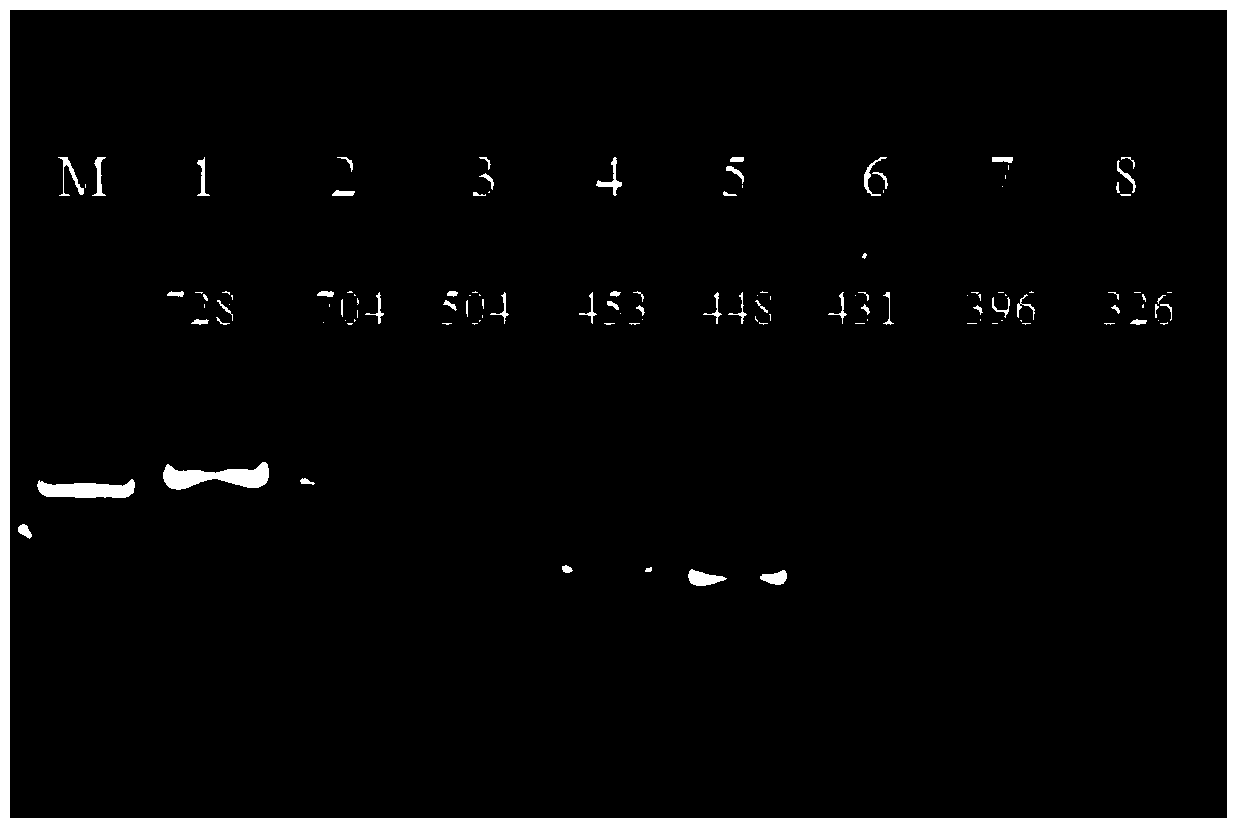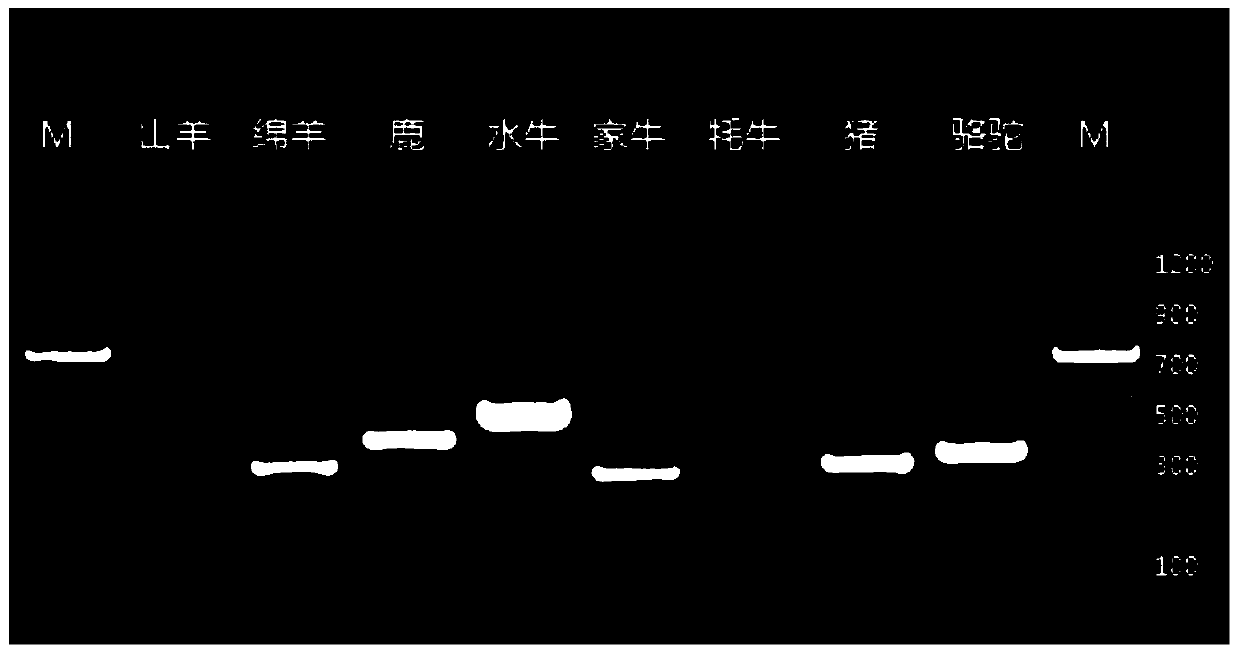A PCR primer and kit for identifying 8 kinds of animal-derived components
A technology of animal-derived components and kits, which is applied in DNA/RNA fragments, recombinant DNA technology, etc., can solve the problems of single detection species and poor specificity, and achieve the goal of improving sensitivity, high specificity and sensitivity, and improving detection efficiency. Effect
- Summary
- Abstract
- Description
- Claims
- Application Information
AI Technical Summary
Problems solved by technology
Method used
Image
Examples
Embodiment 1
[0024] Example 1 Primer Design
[0025] According to the gene sequence published by GenBank, the mtDNA of goat (GU229278), deer (HQ191428), buffalo (AF702618), cattle (EU177861), sheep (KF938337), yak (KM233416), pig (AF486867) and camel (AP003423) The whole sequence was used as a template, and the mtDNA sequences of 8 species and common species (chicken, duck, rabbit, mouse, horse, dog) were compared and analyzed. According to the specificity and conservation of their gene sequences, Primer premier 5.0 software was used to design A universal primer for multiple species, the primer is paired with the mtDNA sequences of the above-mentioned 8 species of goat, sheep, buffalo, domestic cattle, pig, deer, camel and yak. Moreover, in order to improve the sensitivity of primer detection, the sequence of the upstream primer was modified. The specific primer sequences are shown in Table 1 below.
[0026] Table 1: Primers and sequences in the present invention
[0027]
Embodiment 2
[0028] Example 2 PCR system optimization
[0029] The PCR reaction system uses a 20 μL basic system, including 2.0 μL buffer, 2.0 μL each of primers SEQ ID 1 (or SEQ ID3 or SEQ ID 4) and SEQ ID 2, 1.6 μL of dNTP, 0.2 μL of Taq DNA polymerase, MgCl 2 1.2 μL, DNA template 3.0 μL (about 30ng DNA), ddH 2 O supplemented to 20.0 μL.
[0030] According to the above PCR system, a temperature gradient was set on the gradient PCR instrument to optimize the annealing temperature (temperature range 48.0-63.0° C.). The basic PCR process is as follows: denaturation at 95°C for 5 min; denaturation at 95°C for 40 s, different annealing temperatures for 30 s, and extension at 72°C for 40 s as a cycle, a total of 30 cycles; then extension at 72°C for 10 min.
[0031] The PCR products at different temperatures were detected by electrophoresis (4S Red agarose nucleic acid dye), and the temperature of the electrophoresis band was selected as the temperature of the basic system at which the size ...
Embodiment 3
[0034] Example 3 PCR specificity and sensitivity detection
[0035] In order to verify the specificity and sensitivity of the screening primer combination, amplification reactions were carried out to the genomic DNA comprising the above-mentioned 8 species and chicken, duck, squid, small yellow croaker, horse, donkey, dog, mouse and rabbit, and the upstream primer (SEQ ID NO : 1) and downstream primer (SEQ ID NO: 2) amplification results prove that there is no PCR amplification in other animals except the above 8 species. At the same time, it is also proved that the PCR system has no amplification product for soybean genomic DNA. The primer combinations were then tested for sensitivity. Genomic DNA templates of cattle, sheep, and pigs were diluted to a minimum concentration of 1.0pg / μL according to gradients, and different amounts of DNA templates were added under optimal conditions, and PCR products were detected by electrophoresis after amplification. The results showed th...
PUM
 Login to View More
Login to View More Abstract
Description
Claims
Application Information
 Login to View More
Login to View More - Generate Ideas
- Intellectual Property
- Life Sciences
- Materials
- Tech Scout
- Unparalleled Data Quality
- Higher Quality Content
- 60% Fewer Hallucinations
Browse by: Latest US Patents, China's latest patents, Technical Efficacy Thesaurus, Application Domain, Technology Topic, Popular Technical Reports.
© 2025 PatSnap. All rights reserved.Legal|Privacy policy|Modern Slavery Act Transparency Statement|Sitemap|About US| Contact US: help@patsnap.com



